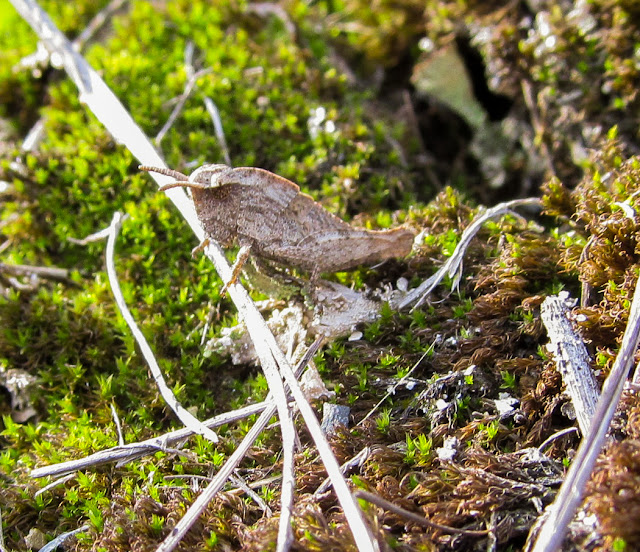The Top of the Gob Pile

I was inspecting an area with an acid mine drainage problem last Wednesday for work and we found the source pretty easily: a massive gob pile. What's a gob pile? It's the pile of stuff left over from coal mining. There's a lot of different materials in it, including a lot of shale, giving it a black color. It's an ugly thing that causes lots of problems, but regulation in the US has stopped companies from abandoning them since 1977. Interestingly enough, there were a few plants growing on the top of the pile, and a few old stumps, which held some biology after all. This tiny grasshopper blended in with the fall colors, until it jumped onto a patch of moss. Pixie Cup Lichen, Cladonia pyxidata , grew in a couple patches. British Soldier Lichen, Cladonia cristatella , made itself known with its bright red caps. Those red caps on the stalks hold its spores. And since I can never resist turning over a decaying log, I was rewarded with this scarab beetle grub. Not sure what i...


